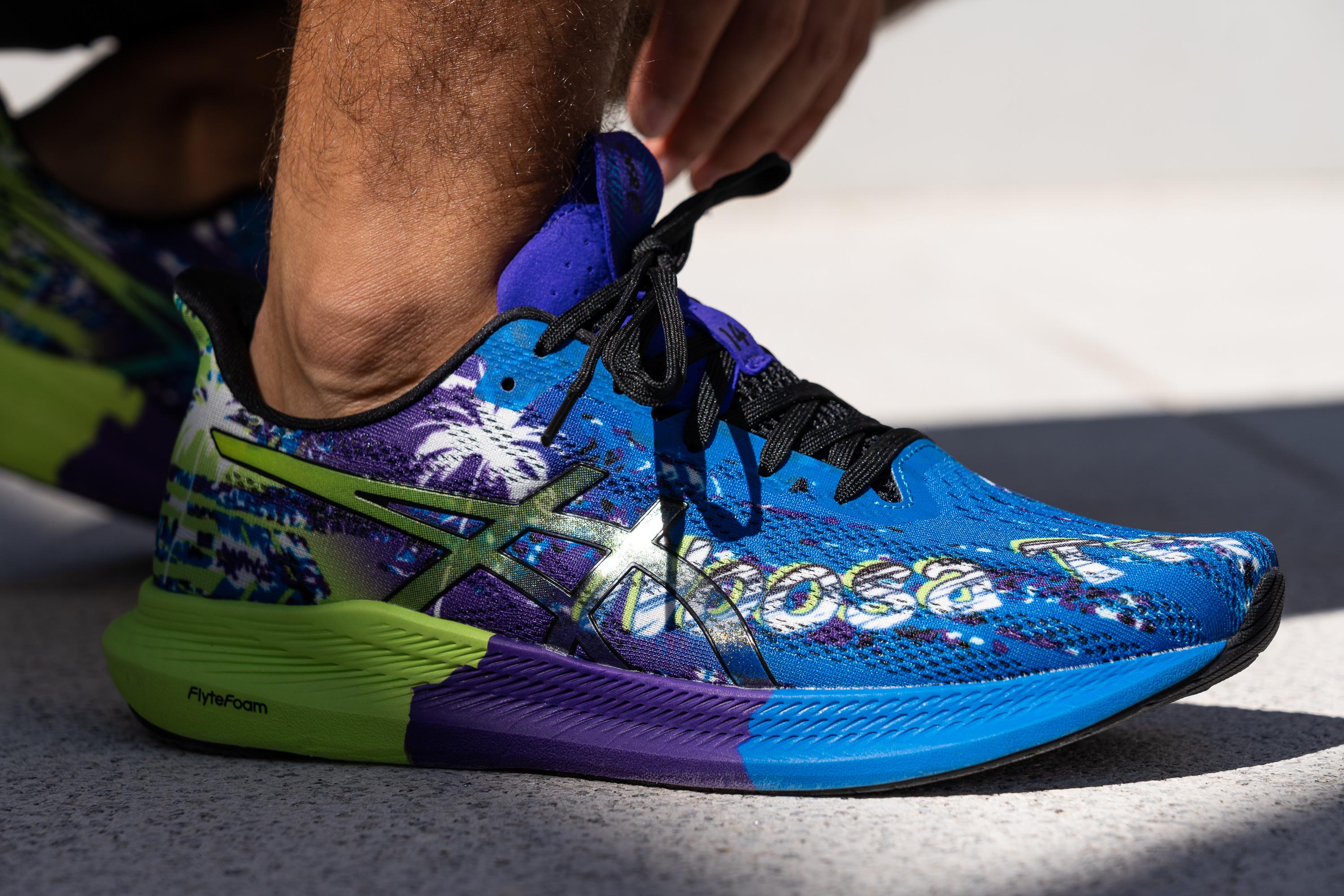Our verdict
Pros
- Do-it-all shoe
- Superior comfort
- Light and nimble
- Responsive and lively
- Versatile for slow and fast runs
- No need for socks
- Great stability
- Efficient lockdown
- Eye-catching
Cons
- Firm at first
- Not as grippy on wet and dirt
Audience verdict
- Top 1% in road running shoes
- Top 3% in ASICS running shoes
Comparison
The most similar running shoes compared
+ + Add a shoe | |||||
|---|---|---|---|---|---|
| Audience score | 93 Superb! | 89 Great! | 84 Good! | 70 Bad! | |
| Price | £135 | £170 | £135 | £90 | |
| Pace | Daily runningTempo | CompetitionTempo | Daily runningTempo | Daily running | |
| Shock absorption | - | High | Moderate | Low | |
| Energy return | - | High | Low | Moderate | |
| Traction | - | High | High | Moderate | |
| Arch support | Neutral | Neutral | Neutral | Neutral | |
| Weight lab Weight brand | 7.5 oz / 213g 9.2 oz / 260g | 7.1 oz / 200g 6.9 oz / 196g | 7.7 oz / 217g 7.6 oz / 215g | 8.5 oz / 242g 8.7 oz / 246g | |
| Lightweight | ✓ | ✓ | ✓ | ✓ | |
| Drop lab Drop brand | 8.0 mm 5.0 mm | 7.8 mm 6.0 mm | 5.9 mm 5.0 mm | 7.7 mm 8.0 mm | |
| Strike pattern | HeelMid/forefoot | Mid/forefoot | Mid/forefoot | Mid/forefoot | |
| Size | Slightly small | Half size small | Half size small | True to size | |
| Midsole softness | Soft | Soft | Soft | Soft | |
| Difference in midsole softness in cold | Normal | Small | Small | Big | |
| Toebox durability | - | Bad | Bad | Bad | |
| Heel padding durability | - | Good | Good | Bad | |
| Outsole durability | - | Bad | Decent | Good | |
| Breathability | Moderate | Breathable | Breathable | Moderate | |
| Width / fit | Narrow | Narrow | Wide | Medium | |
| Toebox width | - | Medium | Wide | Medium | |
| Stiffness | Stiff | Moderate | Moderate | Flexible | |
| Torsional rigidity | Moderate | Stiff | Stiff | Flexible | |
| Heel counter stiffness | Flexible | Flexible | Moderate | Flexible | |
| Rocker | ✓ | ✗ | ✗ | ✗ | |
| Heel lab Heel brand | 30.2 mm 26.0 mm | 30.6 mm 33.0 mm | 32.8 mm 34.5 mm | 28.1 mm | |
| Forefoot lab Forefoot brand | 22.2 mm 21.0 mm | 22.8 mm 27.0 mm | 26.9 mm 29.5 mm | 20.4 mm | |
| Widths available | Normal | Normal | Normal | NormalWideX-Wide | |
| Orthotic friendly | ✓ | ✓ | ✓ | ✓ | |
| Season | All seasons | SummerAll seasons | SummerAll seasons | All seasons | |
| Removable insole | ✓ | ✓ | ✓ | ✓ | |
| Ranking | #3 Top 1% | #89 Top 25% | #241 Bottom 34% | #364 Bottom 1% | |
| Popularity | #380 Bottom 41% | #253 Bottom 31% | #126 Top 35% | #12 Top 4% |
Size and fit
Size
ASICS Noosa Tri 14 fits slightly small (34 votes).
Who should buy ASICS Noosa Tri 14
We recommend this shoe if you are looking for a great performance trainer that can do a little bit of everything: slow workouts, tempo sessions, and races. It provides stability, responsiveness, and durability, and won’t go unnoticed with its bright colours.
On top of this, given its amazingly comfortable upper, it’s an ASICS shoe that we think can be perfect for triathletes looking for an easy-to-slip-on shoe.

Who should not buy it
Look elsewhere if you:
- like super soft shoes. The ASICS Novablast 3 is what you are after
- want a grippier outsole. Try the Magic Speed 2 instead.
ASICS Noosa Tri 14 vs. 13
There have been quite a few changes and, compared with the previous version, the 14 is now softer underfoot, more flexible, lighter, slightly faster, and also more race-oriented.

Really fun to ride in
We found the ride of this ASICS shoe to be lively, responsive, and fun.
There is a good amount of thickness in the sole too. We measured it at 30.2 mm in the heel (insole included), which puts the shoe closer to the max-cushioned category.
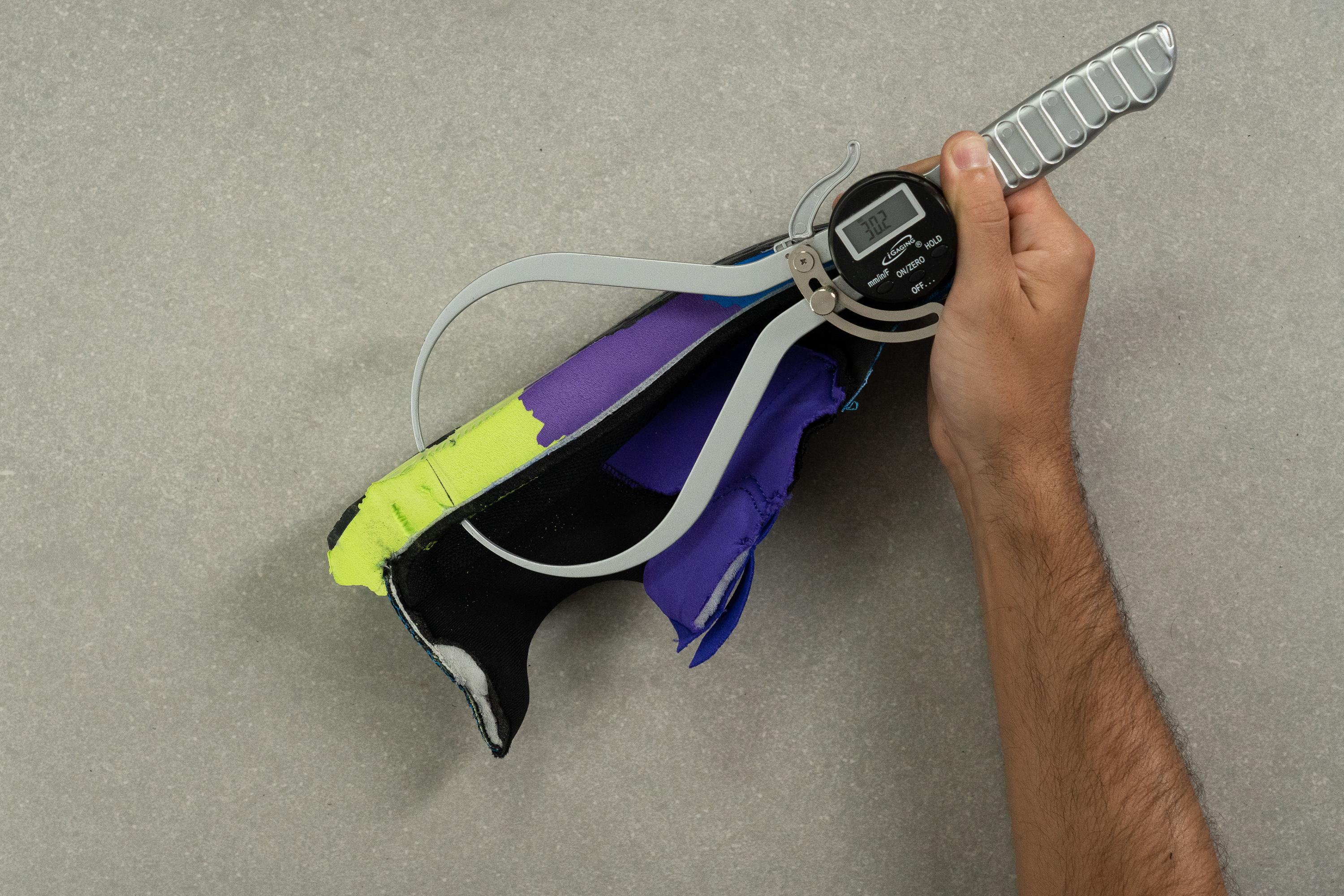
For reference, the insole is 4.5 mm thick, which is typical for running shoes.

To our surprise, the heel-to-toe drop turned out to be 8 mm instead of the officially claimed 5 mm. Perhaps that's what makes the Tri 14 a bit more versatile for the longer and slower runs too?

Surprisingly stable
This is a neutral shoe, but we think that runners with mild stability needs may find it suitable for their feet as the shoe comes with a little arch support and lateral stiffness.
The platform of the Noosa Tri 14 is not wider than the average but still has some solid width in both the heel (88 mm) and forefoot (110.8 mm).
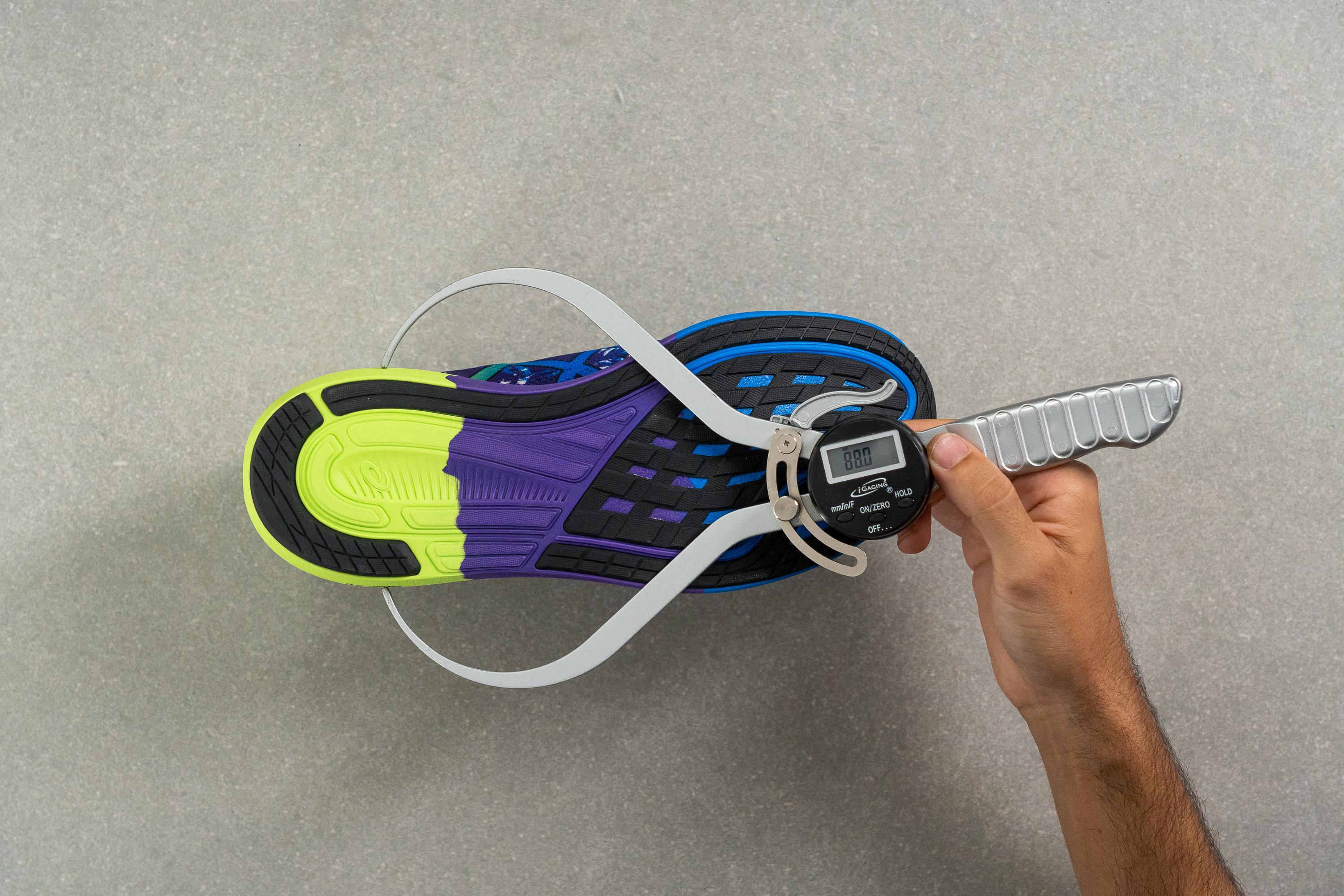
Shifting the foot side-to-side, we could feel (and see) how little the foam itself collapses.
ASICS Noosa Tri 14 is soft but needs some breaking-in
The caveat is that it does take some time to break in the shoe. It initially feels firm, particularly when landing on your heels, but it softens up as the kilometres go by.
Checking the shoe's foam softness with a durometer, we found it to be 12.0 HA which is It is 100%(!) softer than the average of road running shoes.
Disclaimer: We take 5 durometer measurements before claiming the shoe's softness.

We were cruel enough to keep the shoe in a freezer for 20 minutes to check the foam's behaviour in cold conditions. Based on the durometer, it did get 25% firmer compared to room temperature. But even in its "frozen" state, the cushioning is still 46% softer than most running shoes at room temperature.

A flexible shoe for sure
There is no break-in needed when it comes to the shoe's flexibility. From the get-go, the Noosa Tri 14 is more flexible than most running shoes on the market. Based on our force gauge measurement, it is actually 22% more flexible than the average.
Disclaimer: The video below shows only 1 out of 5 measurements that we took to ensure accuracy.
Twisting the shoe sideways, we can also confirm that it has a bit of stiffness to provide mild stability. On a 1-5 scale where 5 is the stiffest, the rated the shoe's torsional flexibility as 3.
Amazing upper
Out on the test run, we found the Noosa 14 to be incredibly comfortable and breathable all throughout.
Looking at the footage of our smoke test, we can confirm that the Noosa Tri 14 belongs to the more breathable bunch. We rated it as 4 out of 5 on a scale where 5 is the most breathable.
You can also see the light passing through the upper in our transparency test below.
We were quite surprised to see how breathable the tongue area is given that the shoe's tongue (6.7 mm) is thicker than the average (5.8 mm).
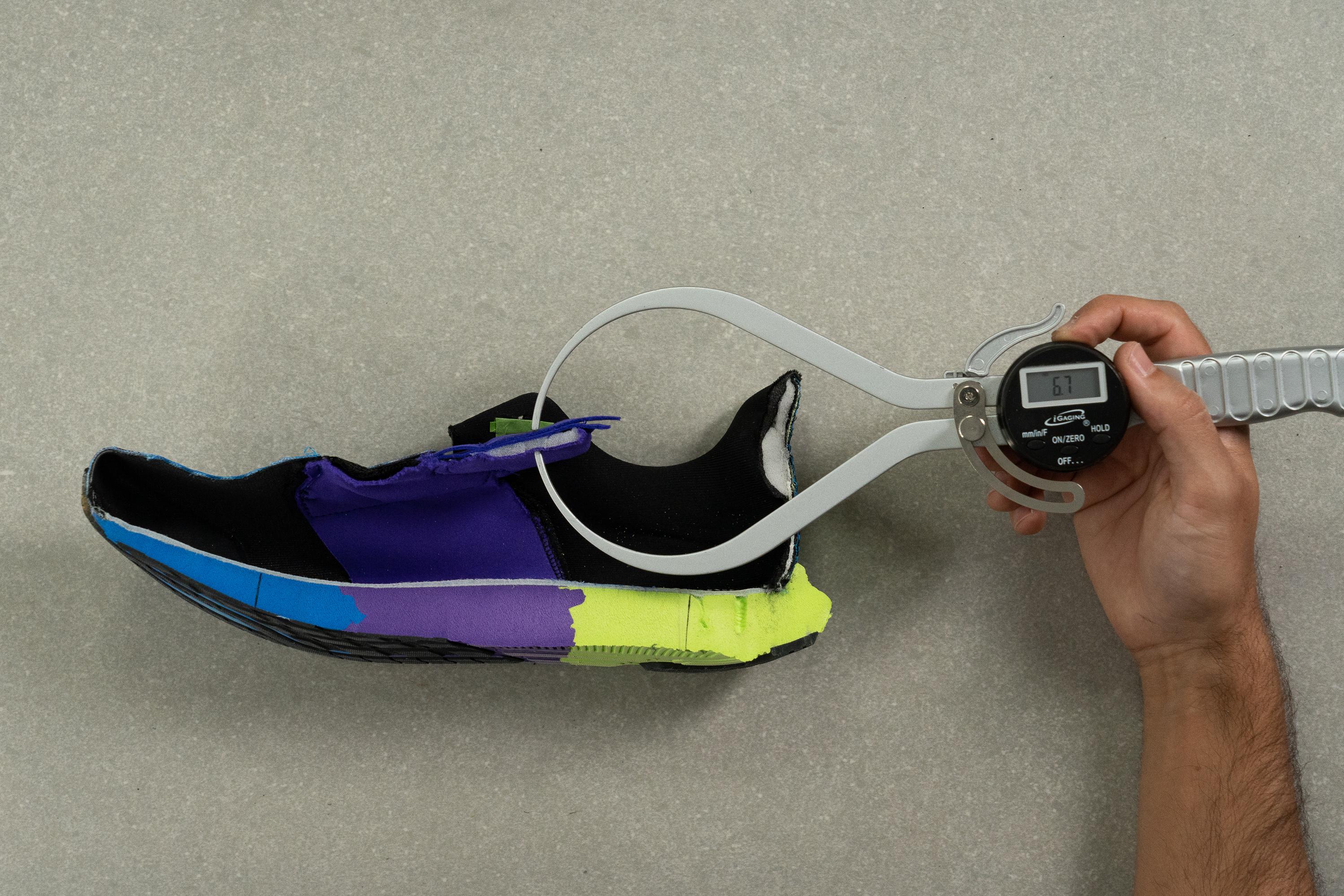
However, the collar doesn't appear to be as padded.
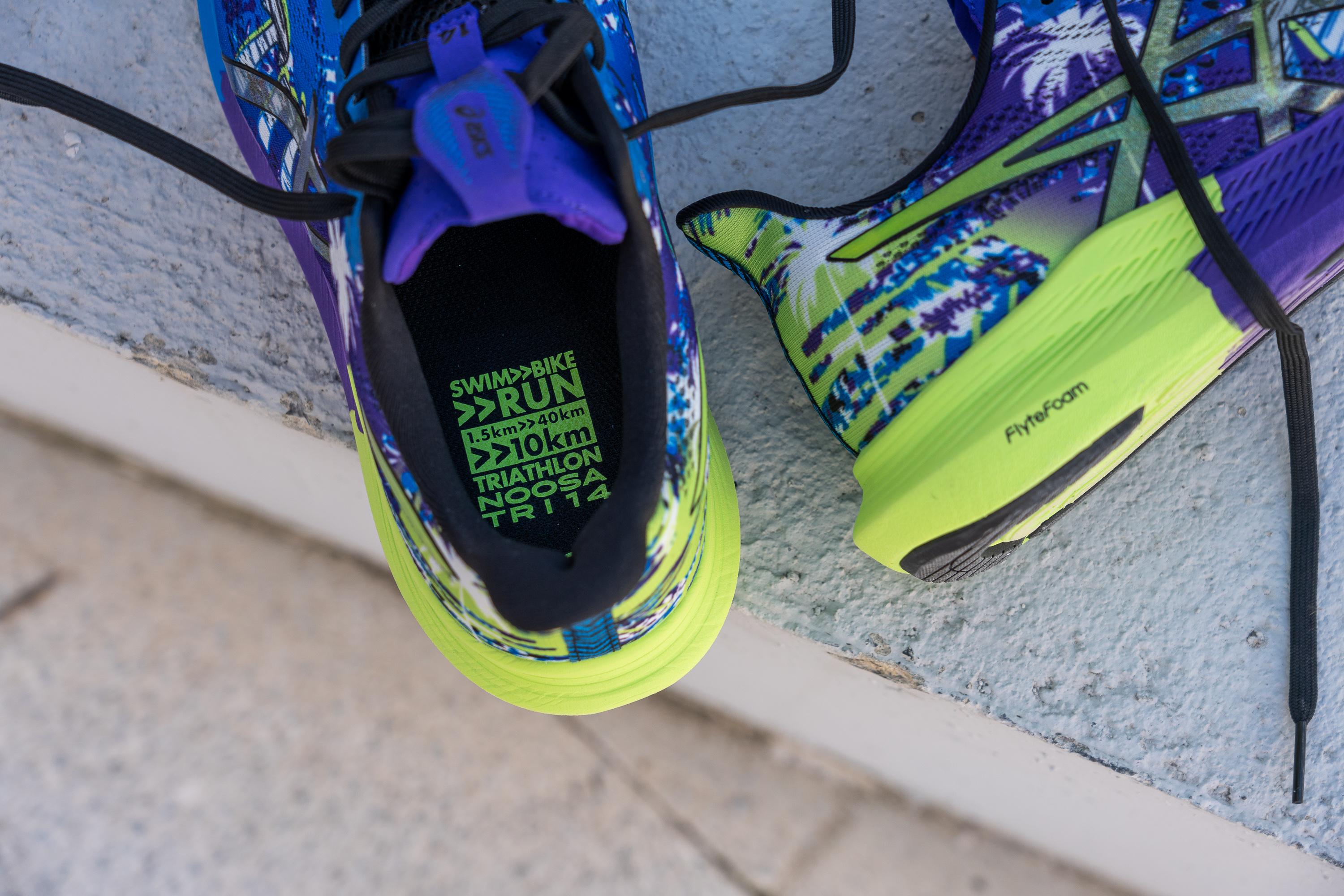
Superior fit and comfort
The in-shoe comfort is amazing in this ASICS shoe. The fit is true to size and snug, but the toe box does not feel narrow, given that the upper can stretch a little bit and offers quite enough room for larger feet.
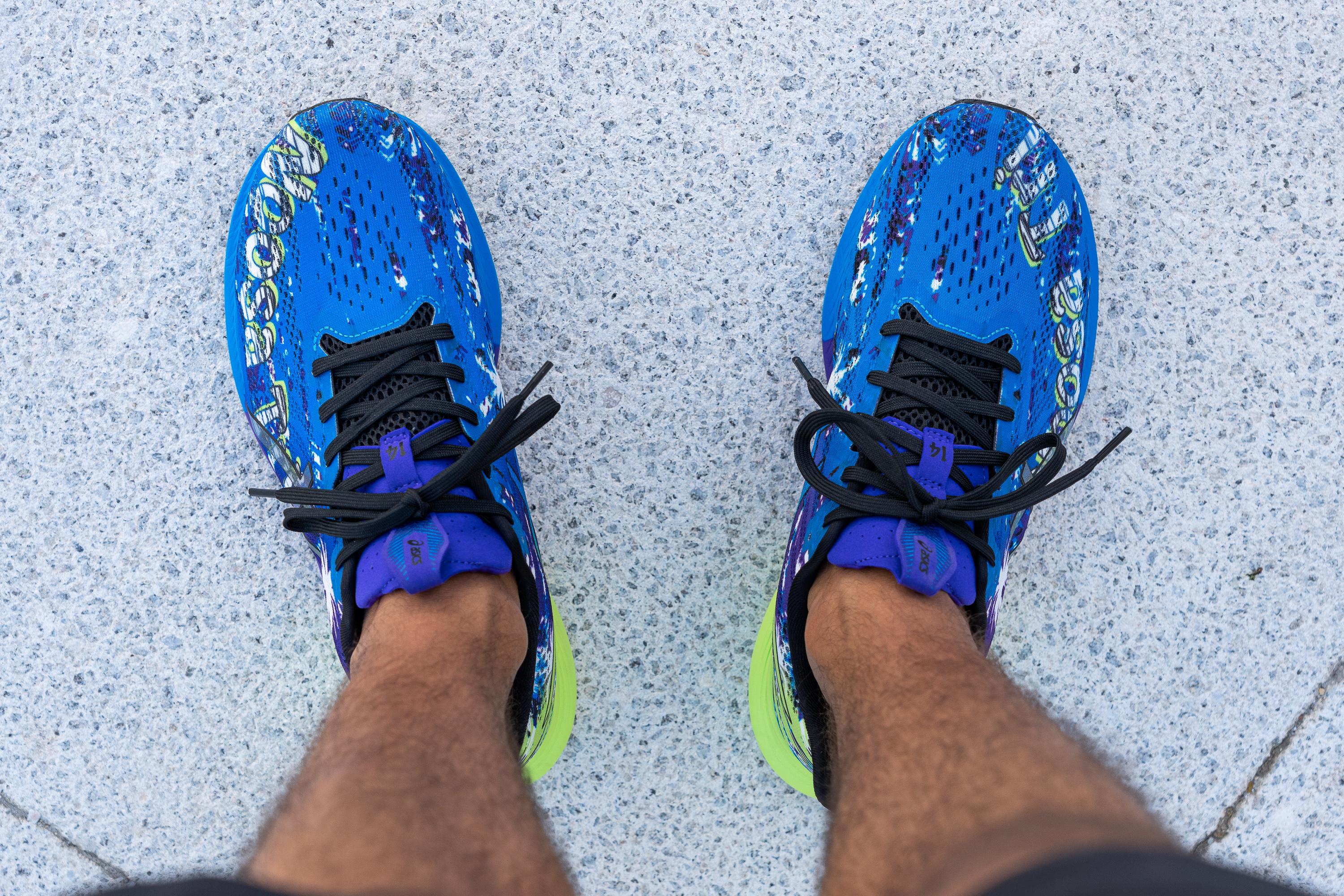
The Noosa Tri 14 has a very race-ready fit though. At its widest part, we measured the shoe's toebox width at 96.3 mm - a couple of millimetres narrower than the average.
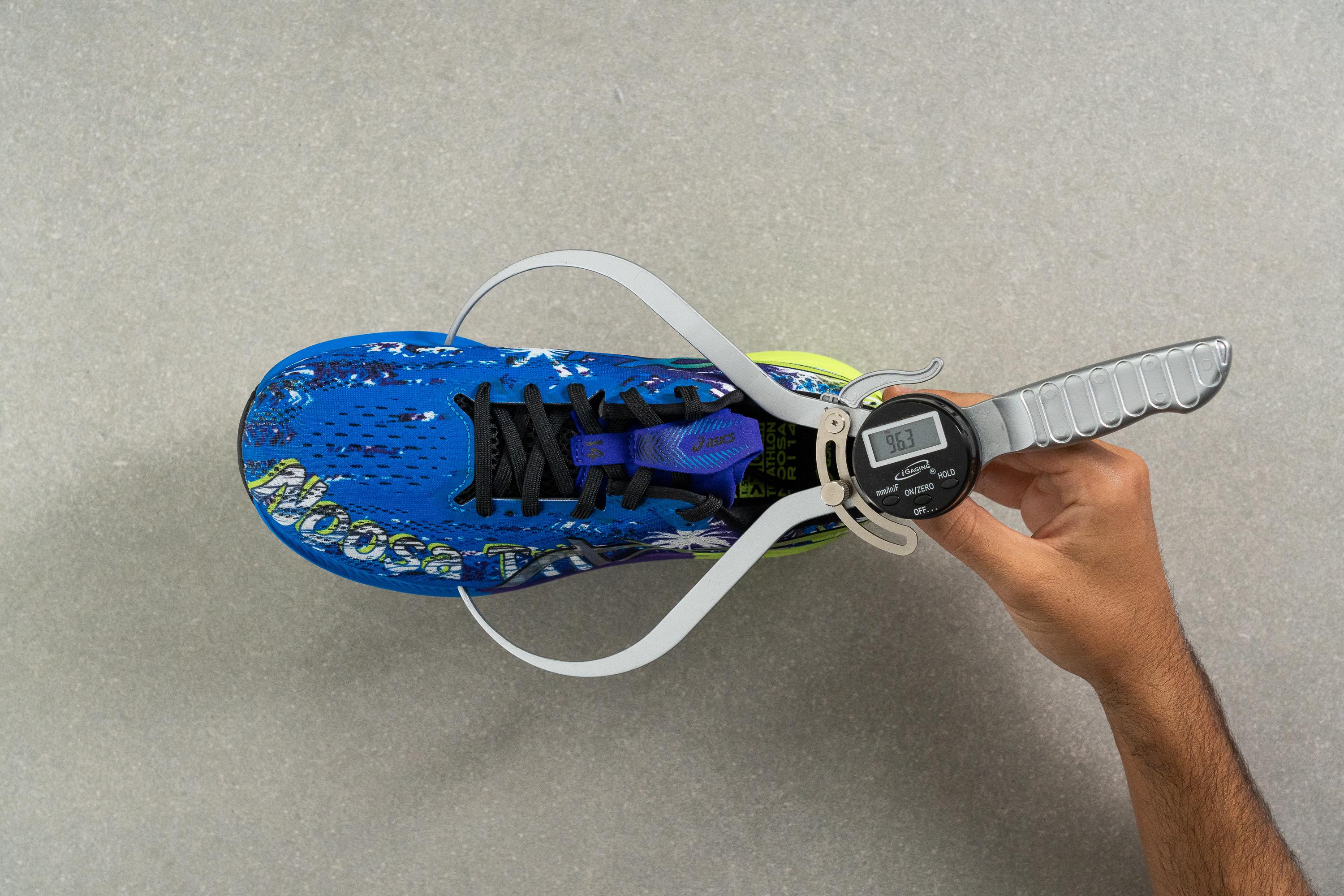
The heel counter is solid and noticeable but well padded so it doesn’t cause any irritation. We gave the heel counter 2 out of 5 in our subjective flexibility assessment. For reference, 5 is the stiffest.
Despite its flexibility, the shoe's heel counter did its job well and we never experienced any heel slippage or excessive ankle shifting.

Noosa Tri 14 has a great lockdown
The shoe feels secure and the lockdown is very efficient. For our medium-sized feet, we felt that the shoe hugged the foot well enough so that we never needed a lace lock.
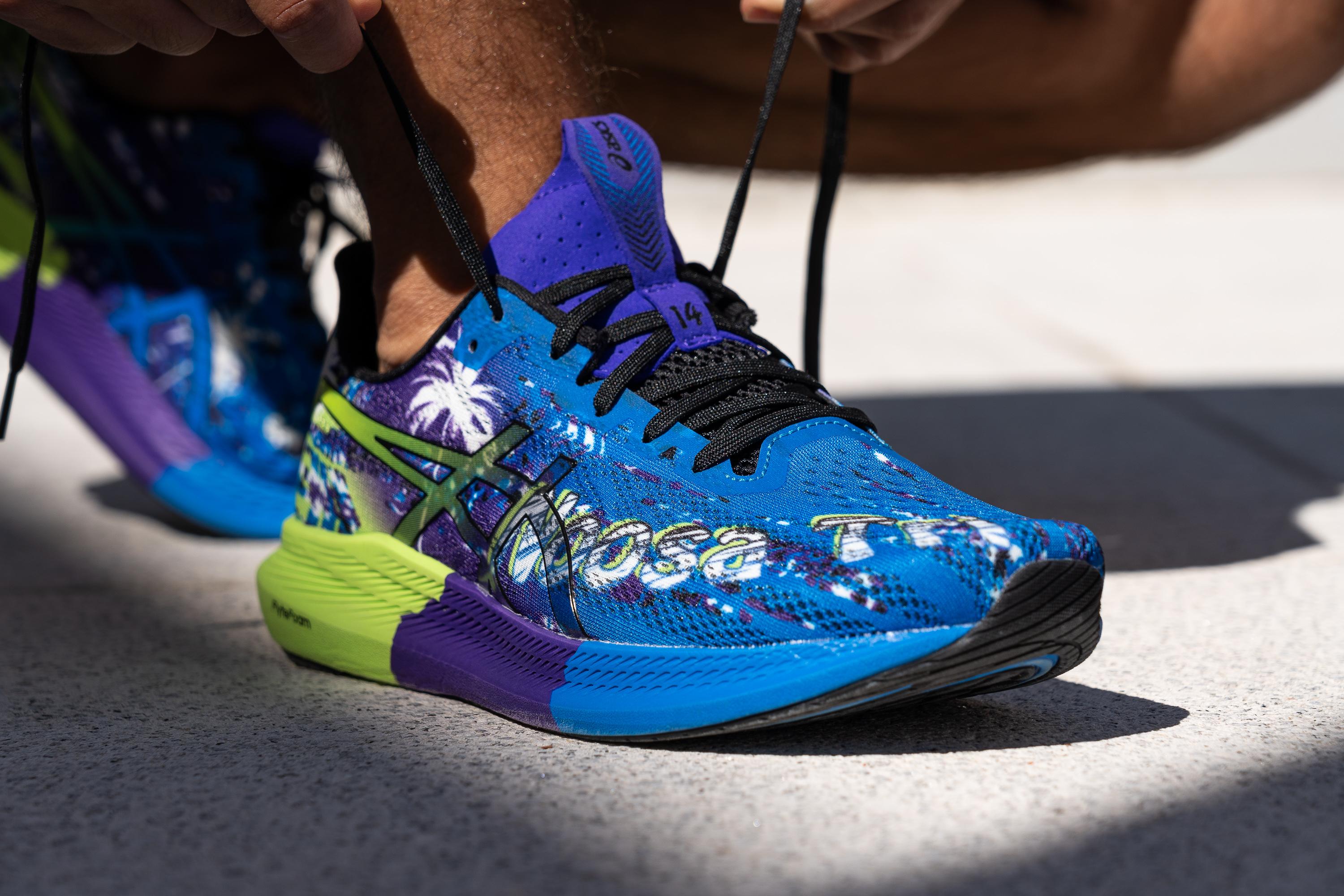
The shoe's gusseted tongue is among the contributing factors to this locked-down feel.

Perfect for sockless wear
The seamless upper and the comfortable mesh make it possible to avoid any friction and the result is a great shoe to wear even without socks, which is what some runners do, especially triathletes.
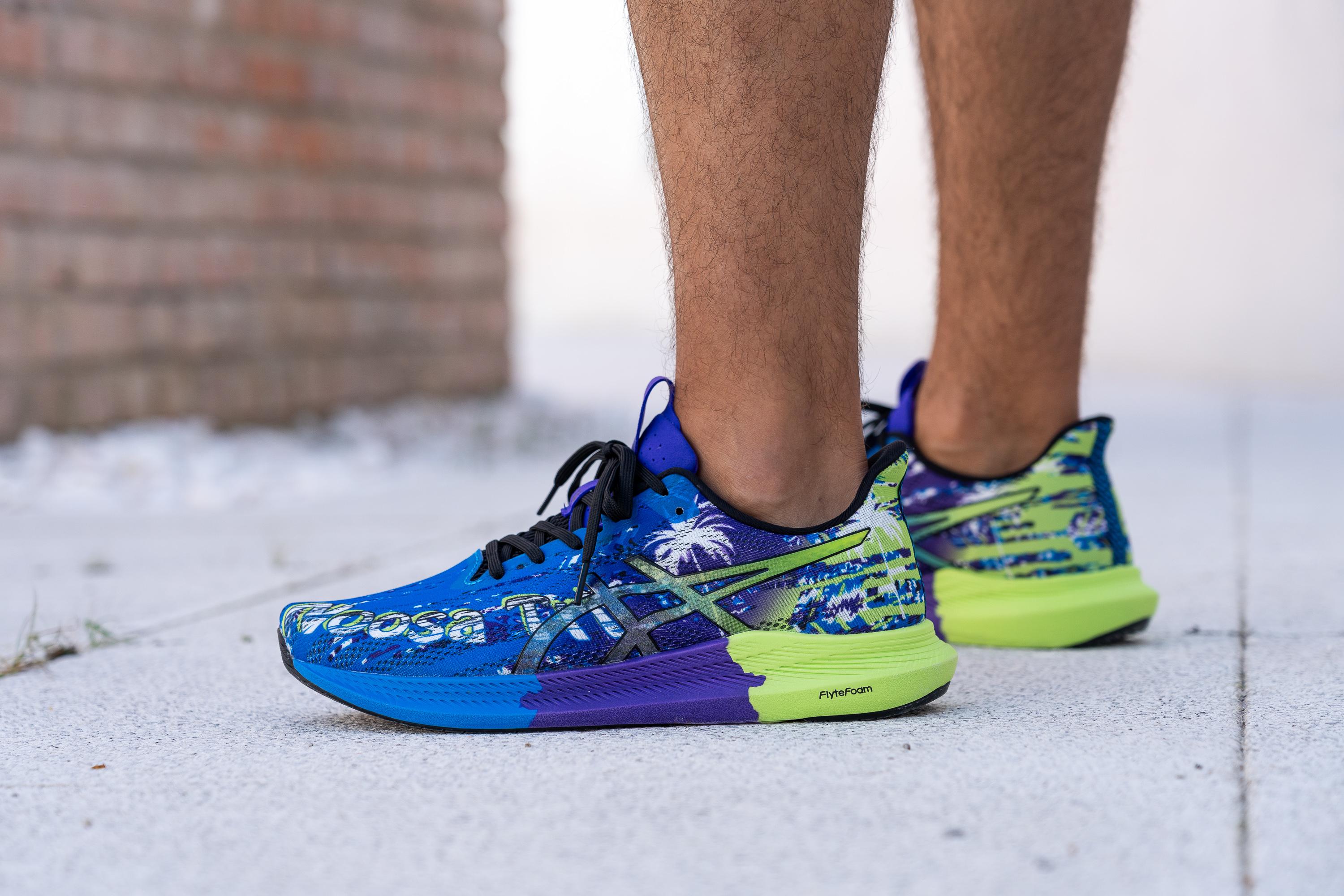
It feels quite pleasant against bare skin and didn't cause blisters even on a warm summer day.
A shoe for any runs
Another great advantage of this Noosa Tri 14 is its versatility. The shoe makes for a fun and speedy run but it’s equally at ease when taken to a slow run.
Grippy on dry roads only
This part hasn’t been changed from the previous iteration and still provides very good traction on roads, yet it is not perfect when it comes to wet and dirt. We felt as though we couldn't trust the shoe fully on dirt.
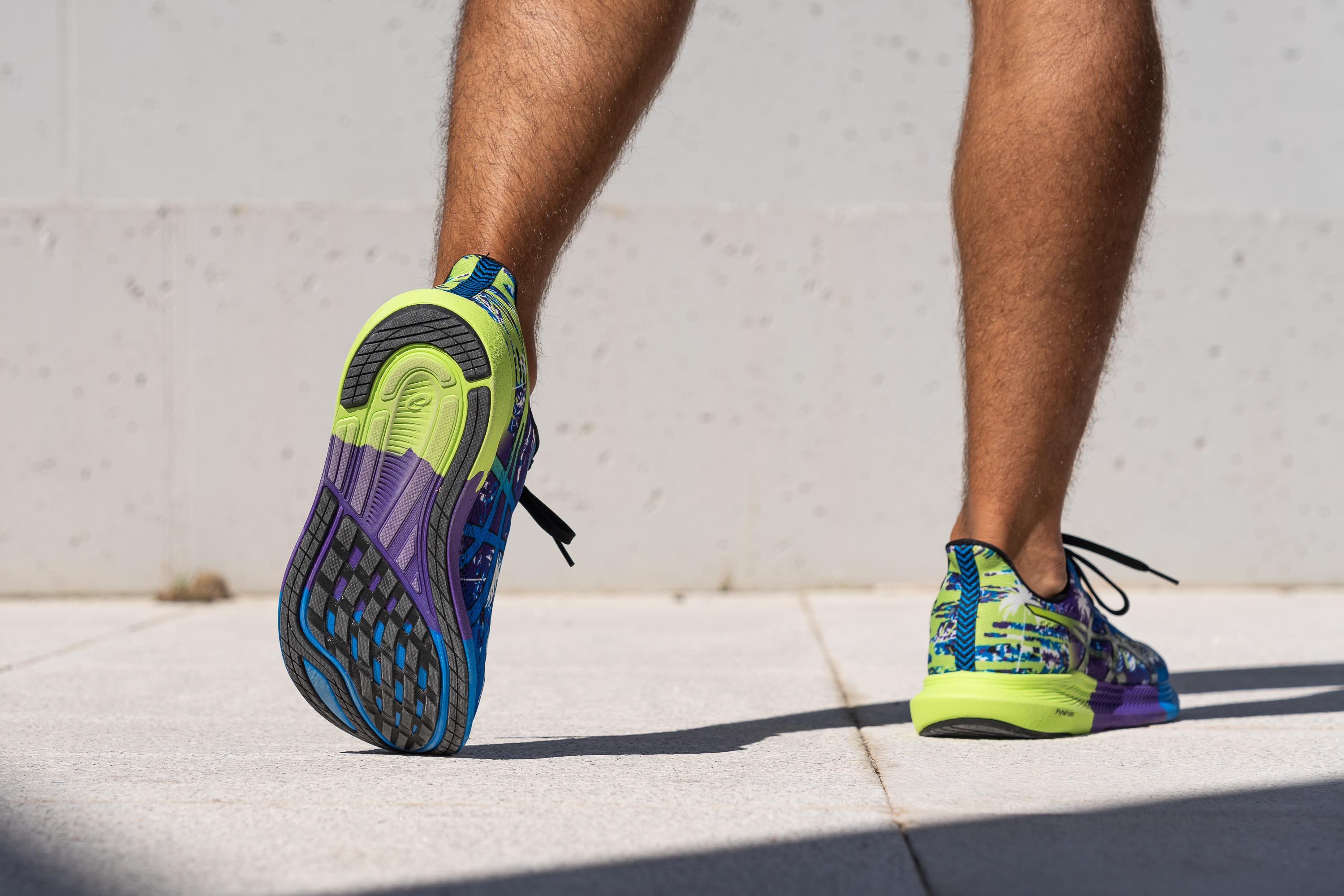
The rubber outsole looks pretty durable though
Despite its lack of traction on wet surfaces, the rubber on the Noosa Tri 14 is rather thick and sturdy for a tempo trainer. It is 4.1 mm thick, while the average is 3.6 mm (road and trail running shoes included).
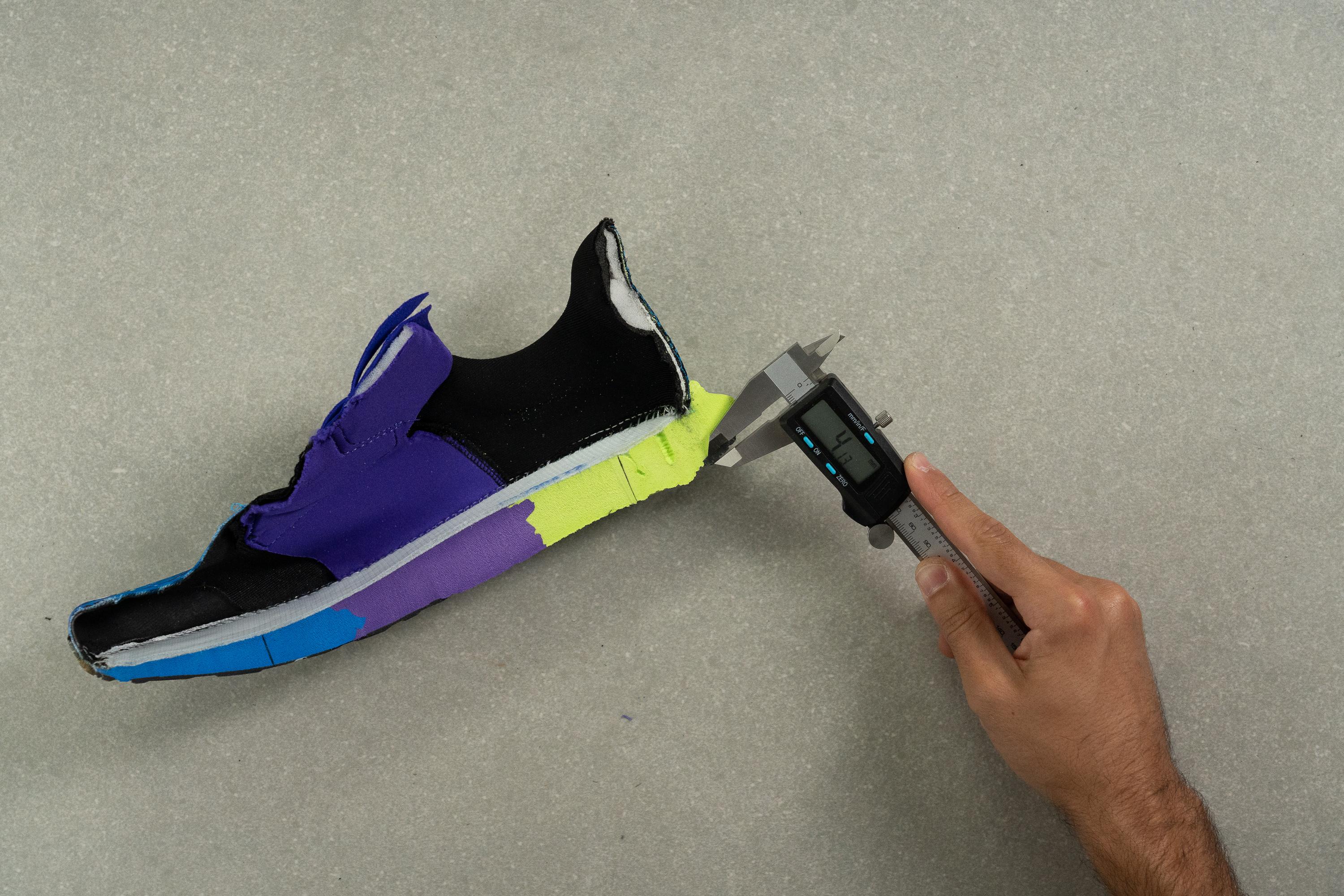
In addition, it is 5.6% harder than the average across running shoe rubber outsoles.

Weight kept at bay
The average weight for an ASICS road running shoe is 10 oz (284g). This Noosa comes in at 9.1 oz (260g) and therefore feels notably light.
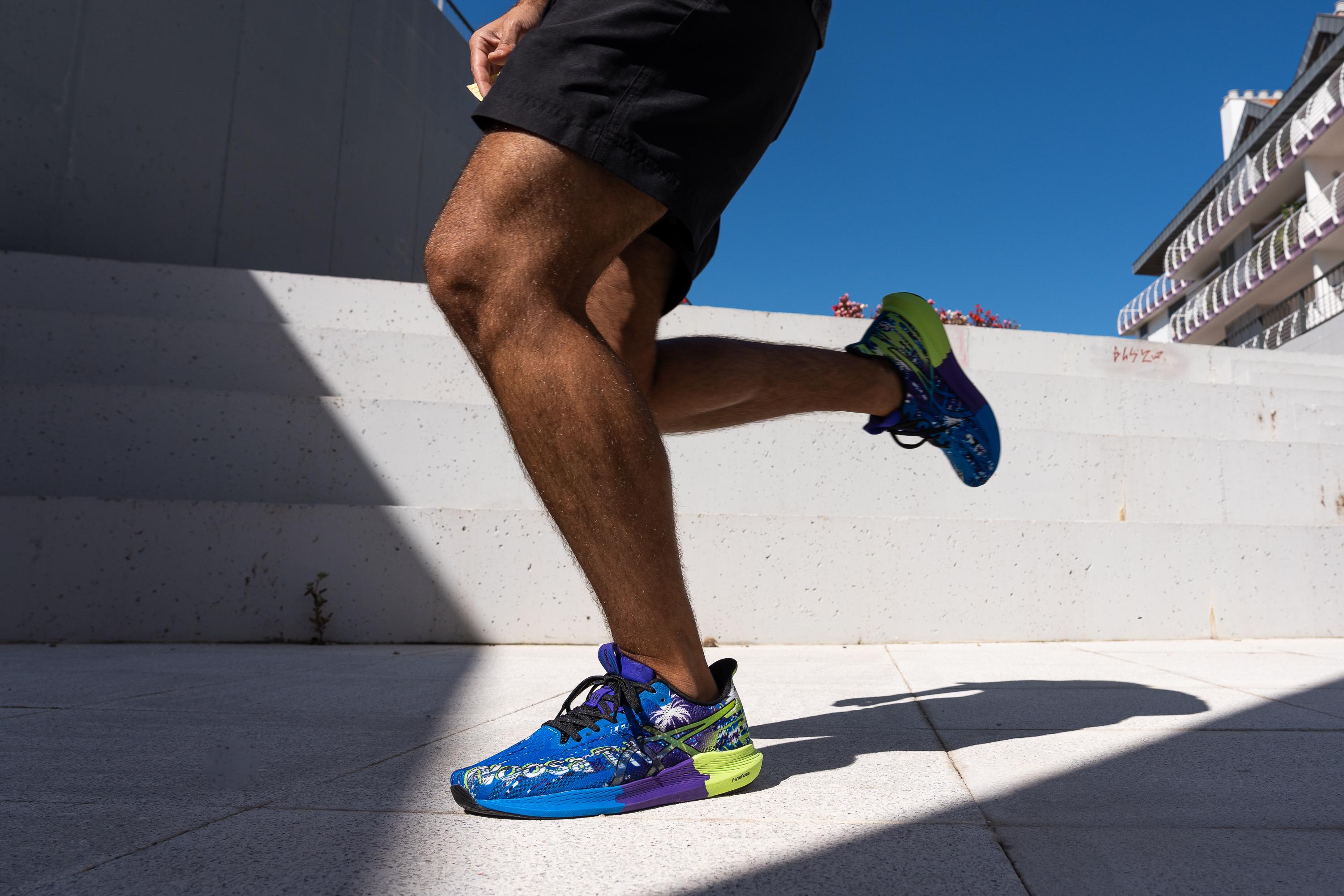
You’ll get noticed in the ASICS Noosa Tri 14
While these screaming colours might be too much for some, we are in love with them! The Noosa Tri 14 is an excellent option for those who want to be noticed.
